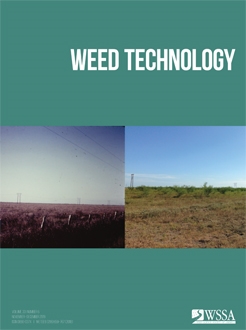Hair fescue is a widespread, seed-limited perennial grass in lowbush blueberry fields. Growers rely on pronamide, an expensive and difficult herbicide to use, for hair fescue management. Recent herbicide registrations provide opportunity to reduce pronamide use, though effects of these herbicides on hair fescue suppression and seedbank reduction are not well understood. The objectives of this research were to determine (1) the effects of herbicides currently registered in lowbush blueberry on suppression of hair fescue tufts and (2) whether suppression of hair fescue with these herbicides reduces hair fescue seedbanks. Pronamide gave the most consistent reductions in flowering tuft density, though applications after both autumn pruning and autumn of the nonbearing year were required to reduce the hair fescue seedbank by >60% across sites. Nonbearing-year hexazinone applications did not control hair fescue or reduce the seedbank. Nonbearing-year terbacil applications reduced flowering tuft density, but hair fescue recovered in the bearing year, and the seedbank was not reduced. Glufosinate applications following autumn pruning or in the spring of the nonbearing year did not suppress hair fescue or reduce the seedbank. Spring nonbearing-year foramsulfuron applications, alone or after autumn or spring glufosinate applications, reduced hair fescue flowering tuft density, but hair fescue recovered in the bearing year, and the seedbank was not reduced. In contrast, autumn and spring glufosinate applications followed by spring nonbearing-year foramsulfuron applications, when combined with autumn nonbearing-year pronamide applications, reduced flowering tuft density in both the nonbearing and bearing years and reduced the hair fescue seedbank by 58% to 83% across sites. Results indicate that hair fescue seedbanks can be reduced in lowbush blueberry fields and that a reduction in pronamide use will require alternative bearing-year treatments to prevent tuft recovery and seed production.
Nomenclature: Foramsulfuron; glufosinate; hexazinone; pronamide; terbacil; hair fescue; Festuca filiformis Pourr; FESTE; lowbush blueberry; Vaccinium angustifolium Ait






